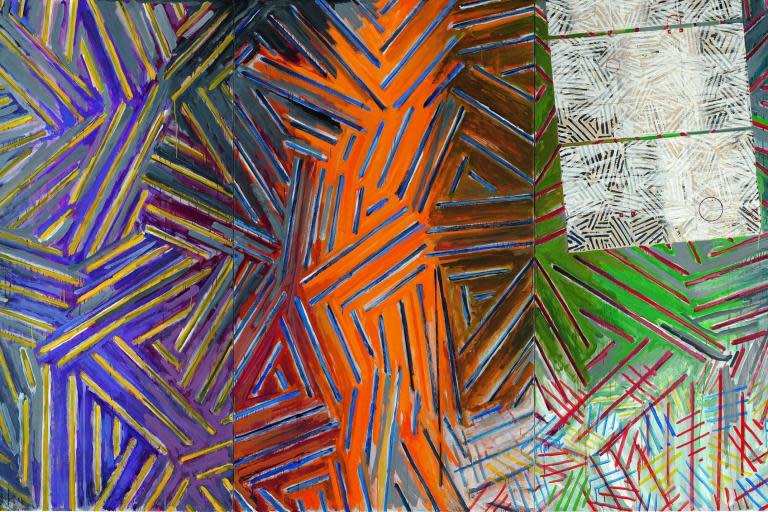Jasper Johns - Something Resembling Truth, review: Unmissable trip to America
First, the good news: this show is unmissable, with some of the most brilliant, tough, witty, unforgettable works of the 20th century — including Johns’s American flags, targets and numbers of the Fifties and Sixties. But it also can’t ignore his work of the past 40 years, which, while alive with philosophical curiosity, fails to pack the punch of earlier decades.
Johns described the images in his early masterpieces as “things the mind already knows”, the most banal of objects and images. Yet up close, what rare wonders they are. Johns used encaustic, a wax paint mixture that freezes the liquid in movement.
Stars and Stripes in faithful red, white and blue, ghostly white, all grey, or set in field of acid orange; targets in the primary colours or black and white; numbers alone or overlaid; these are all astonishing works. Whether paint alone or paint-collage, the surfaces are raw and alive; you want to eat these paintings. Johns did, in an exquisite, tiny work, Painting Bitten by a Man (1961).
Throughout, there’s an underlying philosophical enquiry into making, looking and thinking: objects from the studio appear on paintings’ surface — a broom, a cup used to stir paint. Stencilled words appear wittily or esoterically, emerging from or sinking into the paint, even hanging on a wire. Johns plays with abstraction, most obviously in the Eighties cross-hatching works such as Between the Clock and the Bed.
“Take an object/Do something to it/Do something else to it,” wrote Johns in a sketchbook in the Sixties. It’s only when he tries to take and do too much that the work flounders: the Seasons series (1985-86) and 5 Postcards (2011), loaded with symbolic imagery, lack the clarity of earlier work, they’re too illustrative, too equivocal.
The best late works, the Regrets series (2013-14), close the show, so it ends with something closer to a bang than a whimper. But even the weakest works in the final room can’t diminish the transcendent power of what comes before.
Until Dec 10, Royal Academy; royalacademy.org.uk

 Yahoo News
Yahoo News 

